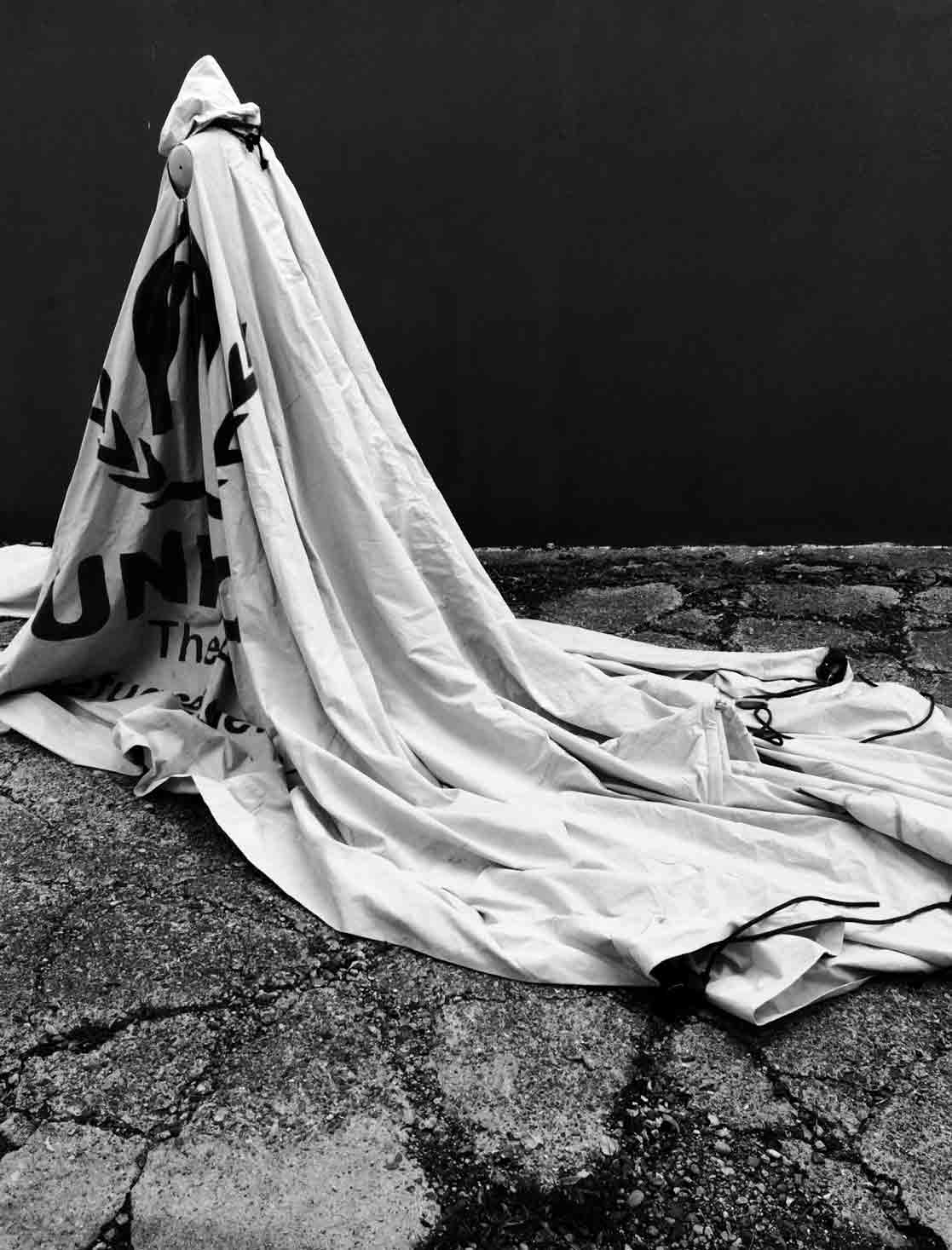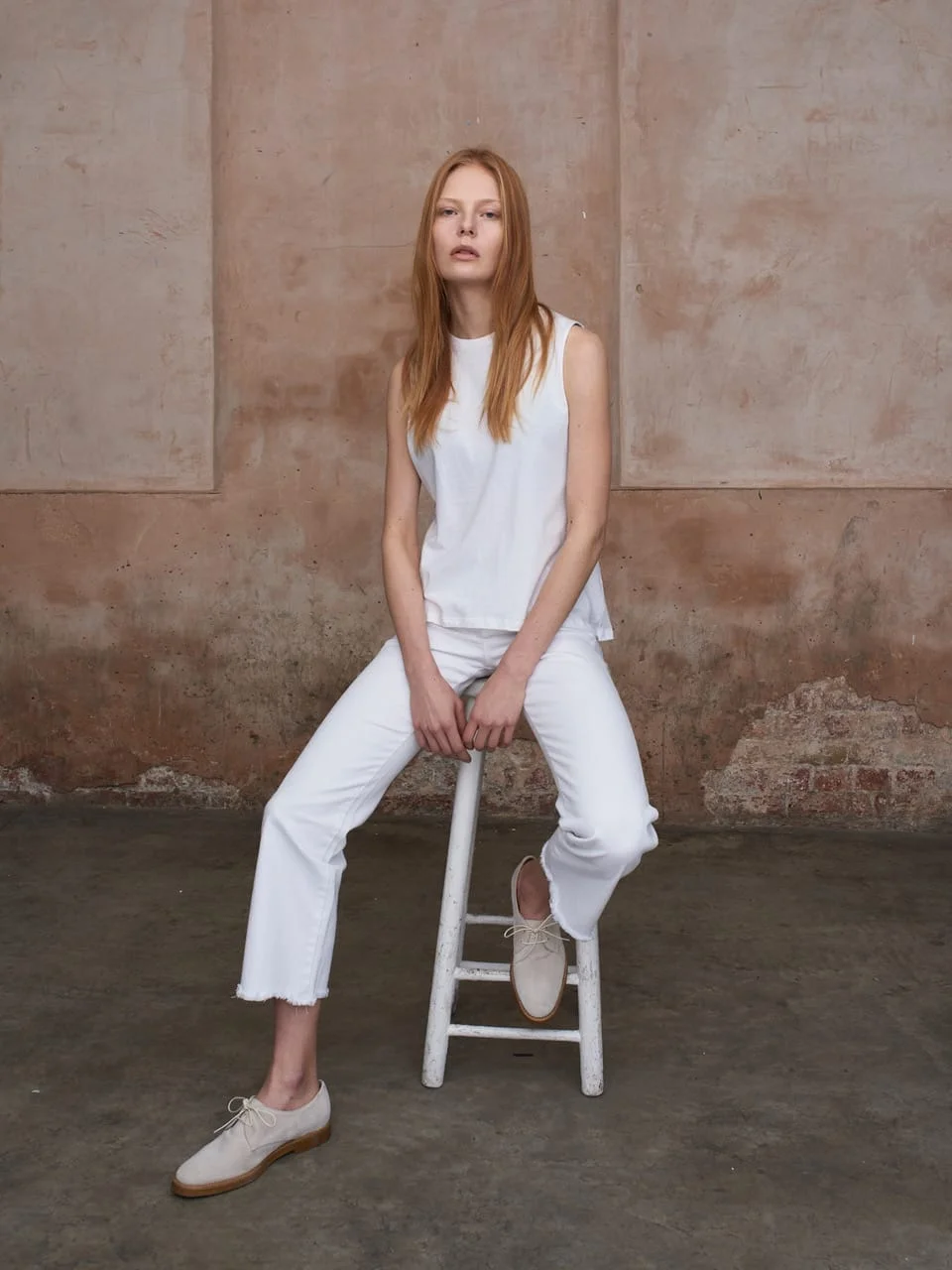The aesthetics of ethics
Vivienne Westwood campaigns on climate revolution.
You don’t need to look further than this season’s catwalks to see that fashion is a mirror to its time. Slogan t-shirts popped up at many of New York’s shows, protesting laws passed by the White House. But another change, steady but incremental, has been moving through the industry. As a new generation wake up to ethics - to urgent issues of people and planet - the aesthetics and practice of fashion is starting to reflect this: in a new interest in craft and the handmade, in traditional fabrics such as wool and linen and in the skills of the individual maker.
At a recent salon at Spring London, an experienced panel gathered to discuss sustainable fashion. 'The wonky aesthetic is having its moment. People are celebrating an irregular style of dressing,' said writer and journalist Tamsin Blanchard. 'The beauty in a piece is that it is small. Or I'd lose the joy and the story,' added knitwear designer Katie Jones.
Work by ethical knitwear designer Katie Jones.
'We are seeing an aesthetic and a way of working that sees change as acceptable. We're looking at an aesthetic that is beginning to speak the values we are trying to convey,' said Orsola de Castro, committed campaigner and founder of Fashion Revolution. I ask key figures, including de Castro, in ethical fashion to describe how today’s aesthetics are reflecting our growing ethical awareness.
Orsola de Castro, founder, Fashion Revolution: ‘Our sense of aesthetic reflects the time we live in, the culture we adopt or defy. The hyper glossification of the past few decades spoke of decadence, unlimited power and unattainable aspirations, all of which risks looking very insensitive at a time of populism, a refugee crisis and an environment falling to pieces. This generation is preoccupied with social issues, social and environmental justice, people and our planet. And young designers’ aesthetics is responding - with crafts, with manmade, with slow and with small. It is still opulent, but the new luxury is linked with the intricacies of everyday lives, with the glorious irregularities that come from human mistakes, with making, and the time it takes to make things that last. Gloss fades, reality is forever.’ http://fashionrevolution.org
Dilys Williams, Professor of Fashion Design for Sustainability, Director Centre for Sustainable Fashion, London College of Fashion, UAL: 'Fashion is a relational practice; connecting materials, skills, cultures and places. Doing this in ways that recognise cause and effect requires designers with an advanced level of creativity and foresight. Climate Change and social injustice offer the biggest critique that the fashion industry has ever faced - it makes us question notions of beauty and relevance. Designers who are able to evolve a new perspective on aesthetics in response to this critique are the real innovators. They are the risk takers. These pioneers realise that fashion is about defying outmoded formats and breaking the rules of repetition. Beautiful design is beautiful design. Care - for each other and our only home, nature - is about a relationship between artistry, business, society and environment. Those who are making this connection are paving the way for fashion as an industry and culture of real prosperity.' http://sustainable-fashion.com
Khandiz Joni, make up artist and co-founder, Novel Beings:‘That’s the great thing about fashion. It changes. We are all influenced by minute stimuli, by music and art and functionality to suit our lifestyles. Our desire for the different and the new but mostly, reinvented colours, shapes and textures adjusts, based on so many things. The general movement towards making more informed decisions with our entire lifestyle has baring here. People are more open to the idea of minimalism (Scandi influence comes through strong) in their homes and, of course, in their fashion choices - which, to a large part, is still very relevant in ethical/sustainable fashion. Fortunately, with innovation in manufacturing, [sustainable] designers have been able to push boundaries and become more exciting with their offerings as the demand for such items is growing. It’s a global shift, with aesthetic, consciousness, trends and technology all coming together at the same time.’
Hannah Kane, Editor-in-Chief, Phoenix Magazine: ‘This question comes down to the heart of aesthetics - the way we perceive what is beautiful. Many people of our generation are beginning to wise up to the [myth] of being told we need more stuff, being sold mass-produced products via a seemingly endless stream of visual advertising. Basically, we're conditioned to be good little worker bees to keep the economy chugging away. [At the same time], we feel a natural ache for something that has meaning and value. There's no doubt that a dress that’s been hand-crafted in an atelier feels more special than the throwaway fashion of the lower-end high street. We instinctively know that a dress that costs £5 is probably at the expense of an unfairly paid factory worker or through blatant disregard for the environment. Thankfully, a revolution is happening from within the industry, and names such as Dame Vivienne [Westwood] and Alber Elbaz telling us to slow down and think about how we consume. It's beginning to be cool to care.’ www.phoenixmag.co.uk
Cora Hilts, co-founder, Reve en Vert:'In the past, ethical fashion has been somewhat regarded as being unable to be as beautiful or as on-trend as luxury fashion but this mentality is slowly but surely beginning to change. At Rêve En Vert, we hold aesthetics to the same level as we hold ethics, so customers don't have to sacrifice one for the other. It's so important for people to be able to dress sustainably but look the way they want to as well. And now, more so than ever, this is beginning to be very possible!'




